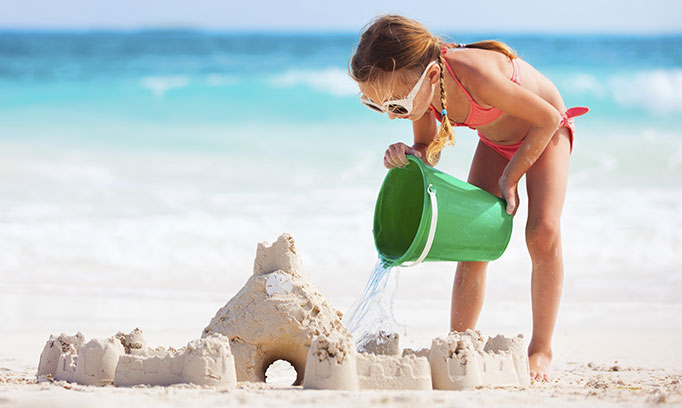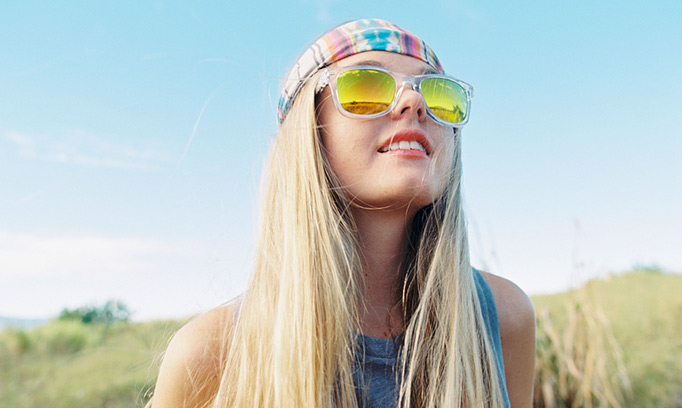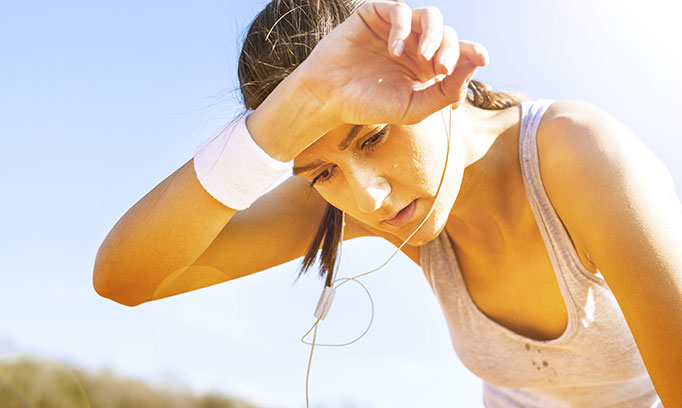Summer is finally here, and if you're like most Minnesotans you can't wait to get out and enjoy the warm weather. Before you step outside, you're careful to apply sunscreen to yourself and your kids. You're all set, right? Not so fast.
Sunscreen protects your skin from harmful ultraviolet (UV) radiation, but the same UVA and UVB rays that damage your skin can also damage your eyes. UV ray damage to your eyes is cumulative, and because your eyes' lenses aren't very forgiving, the injury lasts for life.
Every time we expose our eyes to the sun without protection we're adding risk for developing cataracts and macular degeneration. In extreme situations, where you're out in the sun all day without any eye protection, it's possible to get a very painful burn to your cornea called keratitis that can cause temporary blindness. And some people who have been overly exposed to UV can
develop pinguecula (pin-GWECK-you-la), which is
a yellowish bump located along the horizontal white of the eye.
Damage to your eyes from the sun can occur year-round, but because we're usually outside more in the summer, now is a good time to review the risks and set a pattern of behavior that safeguards your family's eyes for the long haul.
The three S's of protection
Sunglasses—Pick a style with large lenses and/or wraps around your face and check to be sure it says it blocks 99-100 percent of UVA and UVB rays. If you wear prescription glasses, invest in a pair of prescription sunglasses with UVA and UVB protection.
Shade—Stay in the shade or wear a hat with a brim to keep your face in the shade. Be aware of the sun's reflection off of the water or white sand. Don't think you're safe on a cloudy day, as harmful rays can pass through haze and light cloud cover.
Sunscreen—Ten percent of skin cancers occur around our eyes, so look for an eye-specific sunscreen formulated to not sting if it transfers to the eye. Vigilant use of sunscreen around your eyes can also help prevent wrinkles caused by sun exposure.
Children benefit the most from sun protection because their eyes are like a sponge that soak up and holds UV ray damage. It's never too early to get them used to wearing a hat and sunglasses.
Contact lenses
Additional protection is offered by some contact lenses. The FDA regulates two classes of contacts:
Class I blockers, recommended for high-exposure environments, block more than 90 percent of UVA rays and 99 percent of UVB rays. Class II blockers block 70 percent of UVA rays and 95 percent of UVB rays. Talk to your optometrist if you wear contact lenses and spend a lot of time outdoors to see if these lenses are right for you. UV-protective sunglasses should still be worn with these contacts.
Enjoy these summer days while they last, but on your way out the door, remember to apply sunscreen, throw on a hat and grab your sunglasses.
P.S. The sun isn't the only hazard to your eyes this summer. It's important to wear professional-quality eye goggles when doing summer chores such as mowing the lawn, chopping wood or hammering nails. It's easy for a rock or piece of wood to ricochet into your eye and cause serious injury.






